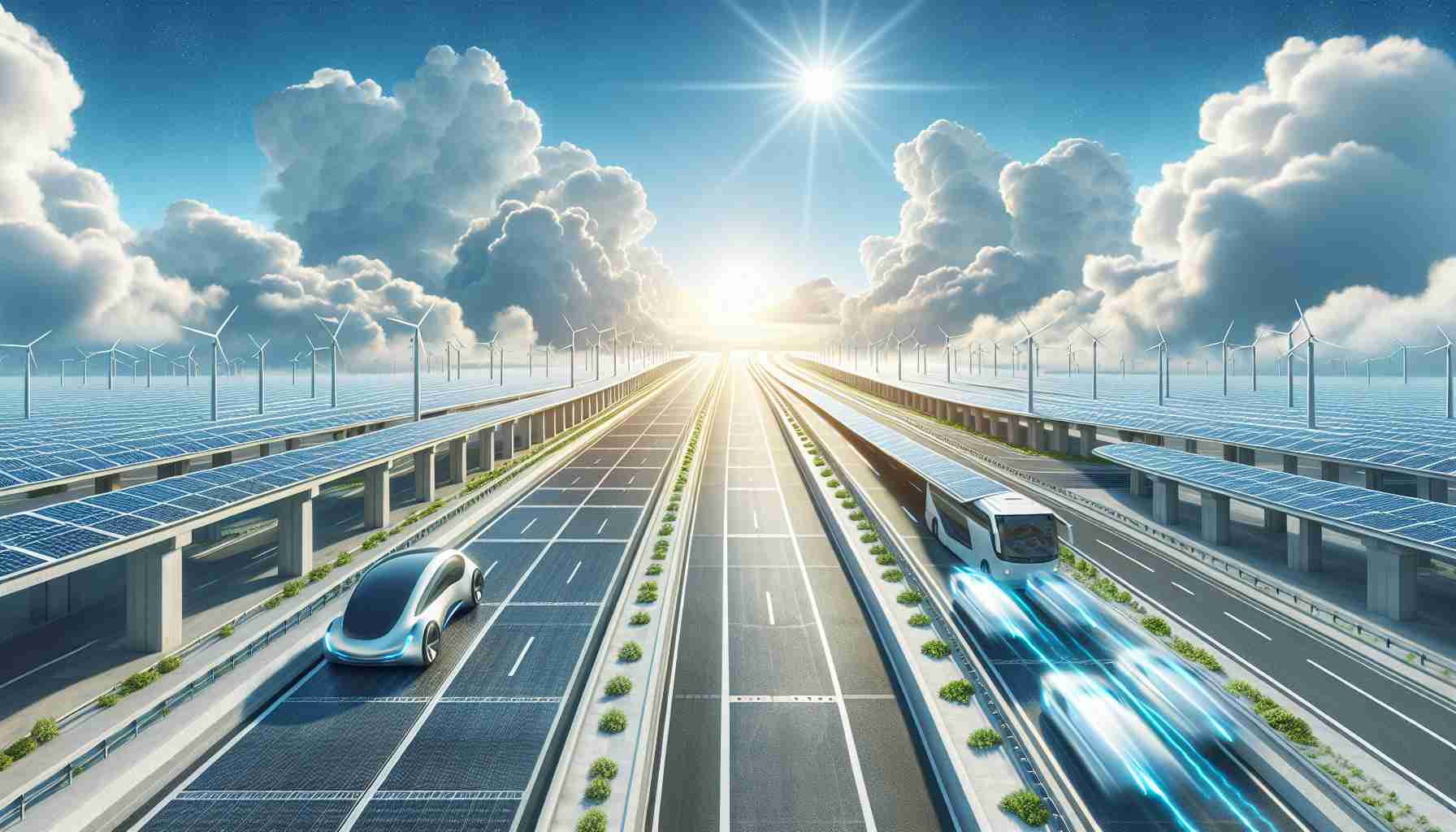
Revolutionizing Energy Production
As the world grapples with pressing issues like climate change and dwindling energy sources, innovative solutions are emerging that could reshape our future. One of these groundbreaking ideas proposes the installation of an astonishing 52 billion solar panels on highways across the globe.
This ambitious initiative aims to generate a staggering 17,578 TWh of electricity each year, which represents over 60% of the world’s electricity consumption in 2023. If implemented, this project could potentially cut global carbon emissions by up to 28%, fundamentally altering our approach to renewable energy.
Dual Benefits for Safety and Sustainability
What makes this proposal even more compelling is its dual purpose. Not only does it promise significant reductions in carbon emissions, but it could also enhance road safety. With annual road traffic accidents causing approximately 1.35 million deaths worldwide, solar panels could provide much-needed shade and protection against harsh weather, theoretically reducing these accidents by 11%.
Furthermore, the economic benefits are notable. By lowering the incidence and costs associated with traffic accidents, billions could be saved, enhancing the overall quality of life for many.
Overcoming Challenges Ahead
Despite logistical and financial hurdles, the potential returns of about $14.42 trillion over 25 years could fuel further investments in green technologies. Using existing road infrastructure for solar energy could optimize land use without disturbing natural ecosystems.
While some skepticism remains about the feasibility of this vision, advancements in solar technology and a growing demand for sustainable energy make such an endeavor increasingly attainable. As we look ahead, embracing such radical solutions could pave the way for a greener, safer world.
Harnessing the Sun: The Future of Highway Solar Power
Revolutionizing Energy Production
As the urgency for sustainable energy solutions intensifies, the concept of deploying 52 billion solar panels on highways has emerged as a pioneering initiative. This project could revolutionize energy production and significantly impact global carbon emissions and road safety.
How It Works
This ambitious solar highway project aims to convert vast stretches of existing roadways into power-generating assets. By strategically placing solar panels atop highways, the initiative targets an annual electricity output of approximately 17,578 TWh. This output would meet over 60% of the world’s electricity needs, significantly bolstering renewable energy production.
Pros and Cons
Pros:
– Massive Energy Generation: A substantial increase in renewable energy capacity.
– Reduction in Carbon Emissions: Potentially cut global carbon emissions by 28%.
– Enhanced Road Safety: Solar panels could offer protection from weather elements and reduce road accidents, theoretically lowering fatalities by 11%.
– Economic Gains: Savings from reduced traffic accidents could exceed billions, boosting economic health and quality of life.
Cons:
– Logistical Challenges: The installation and maintenance of solar panels on highways pose significant operational hurdles.
– Initial Costs: High initial investment may deter stakeholders.
– Land Use Conflicts: While using existing roads, the integration process must address the potential impact on infrastructure and traffic flow.
Use Cases
The implementation of solar panels on highways can pave the way for:
– Vehicle Charging Stations: Integration of EV charging facilities powered directly by the solar infrastructure.
– City Cooling: The shade provided by the panels could help to lower urban temperatures, contributing to urban heat management programs.
Limitations
Though beneficial, there are limitations to consider:
– Weather Dependency: Performance is affected by weather conditions, impacting energy reliability.
– Coverage Gaps: Not all highways may be suitable for solar panel installation due to structural constraints and local regulations.
Specifications and Innovations
Future innovations may include:
– Bifacial Solar Panels: These can capture sunlight from both sides, enhancing efficiency.
– Smart Technology Integration: Incorporation of IoT to monitor and optimize energy output and usage in real-time.
Pricing and Economic Analysis
The estimated return on investment for this initiative could reach $14.42 trillion over 25 years. The initial financial outlay may seem daunting, but the long-term benefits of reduced carbon footprints and improved public safety present compelling arguments for investment in this groundbreaking technology.
Security Aspects
Implementing such widespread infrastructure would require stringent security measures to protect the solar installations from vandalism and disasters. Developments in resilient materials and surveillance can mitigate risks and enhance the durability of solar highways.
Trends and Future Predictions
As technology advances and the demand for renewable energy escalates, the vision of solar highways is becoming increasingly viable. Future trends may see global adaptations of this model, further decreasing reliance on fossil fuels and emphasizing sustainable development.
Conclusion
The installation of solar panels on highways proposes a dual benefit—significantly increasing renewable energy production while enhancing road safety. As society confronts the challenges of climate change and energy scarcity, embracing innovative solutions like these will be crucial for a sustainable and safe future.
For more information on energy innovations and sustainability trends, visit energy.gov.



